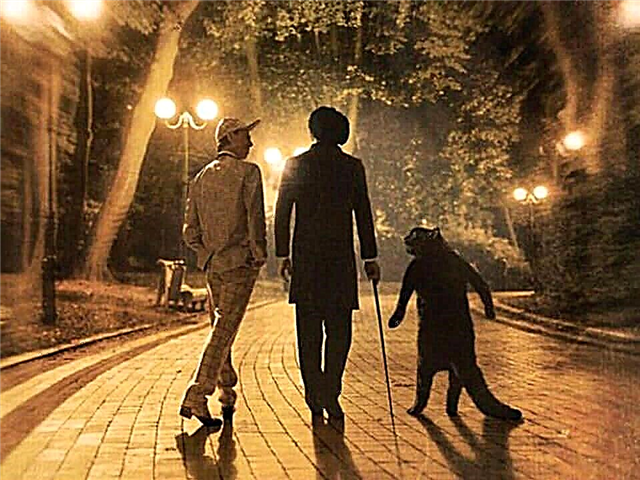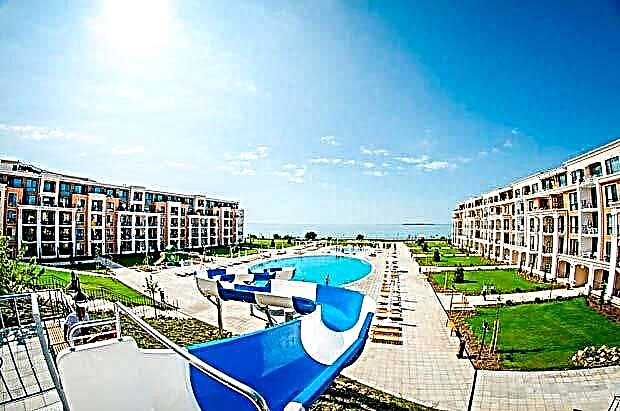Address: Russia, Yaroslavl region, Rostov Veliky, st. K. Marx, 25a
Year built: 1566 year
Architect: Andrey Maloy
Coordinates: 57 ° 11'18.4 "N 39 ° 25'11.8" E
Content:
The Rostov Church of the Ascension of the Lord is often called by the name of the chapel the Church of Isidore the Blessed on the ramparts. He "grew" in 1566 over the resting place of one of the most famous and revered Rostov saints - Blessed Isidor Tverdislov. The surviving church is one of the oldest in the Rostov land. It has a unique history that is closely related to the traditional Russian veneration of the holy fools, or, as they used to say, the blessed, who bring the truth to the world in an unusual way and do not demand anything in return.
Life of Blessed Isidore
Isidore was born in the Prussian city of Brandenburg. His parents were Catholics with ties to influential and wealthy German families. As a youth, he decided to act like a fool and walked to Russia. For life, Isidor chose the city of Rostov and here he converted to Orthodoxy. He lived in a hut built of branches, led an ascetic lifestyle, prayed and helped Christians with advice and predictions.

However, he endured a lot of humiliation, ridicule and beatings for the way of life of the holy fool. Isidor received the nickname Tverdislov because his prophecies always came true, that is, the word of the blessed one was “firm”. The most famous miracles of the holy fool were the salvation of a Rostov merchant thrown into the sea and the prediction of the bishop's path to the young prince Savva Obolensky.
After his death (May 14, 1474), a wooden church was erected over the grave of the holy fool, built on the site of his hut. The veneration of Isidore began during his lifetime, and after his death it only grew. Crowds of pilgrims went to the new church for healing and spiritual advice. Later, three more Rostov miracle workers were buried there - the holy fools Artemy Tretyak, Stefan and Afanasy.
Isidore was recognized by the entire Russian Orthodox Church as a miraculous saint between 1552 and 1563. They began to depict the holy fool on icons and devote church rituals to him, for example, the gospel on the day of the death of the blessed one - May 27 (May 14, old style).
History of the Church of the Ascension of the Lord
The stone church of the Ascension of the Lord was built on the site of a dilapidated wooden church in 1566 by decree of Tsar Ivan the Terrible, during the time of the Rostov Archbishop Nikandr. Andrei Maloy, the "sovereign" architect of Ivan the Terrible himself, took part in the construction of the temple. The name of this master was mentioned in a temple-created inscription on a white-stone slab (or insert board), fixed on the church wall. But, unfortunately, it was not possible to preserve it until our time.
By decree and at the expense of Tsar Ivan the Terrible in 1572, a magnificent wooden iconostasis with the royal gates, carved by skilled craftsmen, was ordered for the church. To house the relics of the saint, a silver shrine-tomb was erected in 1817. It was located under an arch that ran between the warm and cold parts of the church. The relics of Isidore, revered by believers, are still in the temple of the Ascension of the Lord, and are kept under the shelter of this church.

According to written sources, at the beginning of the 20th century, there were 382 local residents in the parish. The services were conducted by a priest and a psalmist. The church kept a shroud, donated by the Stroganovs - an image of Isidor Tverdislov, embroidered in gold and silver on silk, which lay on his coffin. In addition, a letter of gratitude from Tsar Fyodor Mikhailovich and two icons depicting the holy fool Isidor were kept as a shrine. Unfortunately, it was not possible to preserve all this, including the silver shrine, during the Soviet era. In 1930, the temple was closed and transferred to the balance of the city museum. In 1955-57, the church was studied in detail under the guidance of the famous architect and experienced restorer Lev Arturovich David. And later, large restoration work was carried out in it, the purpose of which was to give the temple an appearance as close as possible to the original. For this, the three-bladed zakomars and the helmet-shaped dome were restored, the chapel of Blessed Isidore was dismantled and the dome over the refectory was removed. Divine services were resumed here only in 2003.
Architectural features and interior of the Church of the Ascension of the Lord
The place where the temple is located is located near the ancient defensive rampart that encircled the old city, therefore the prefix "on the ramparts" appeared in the name of the temple. When these earthen fortifications were erected in Rostov in the 17th century, the temple was preserved, surrounding it with an embankment.
The Church of the Ascension of Christ is contentedly modest and majestic. Its architecture has much in common with the posad temples, which were built in Moscow in the 16th century. During that period, the appearance of the temple buildings reflected the dogma of the church about the supremacy of the cross. The religious building has free internal space, not supported by pillars, and is covered by the so-called cross vault. As a result, the room turned out to be square in plan, and the roof of the temple acquired a complex three-bladed pattern.
The three-bladed end of each wall of the building and the inner blank wall, on which the iconostasis is located, give the church an upward aspiration. This visual impression is enhanced by a rather large drum and a dome topped with a cross.

The north and south facades are identical to each other. The three apses of the eastern façade are low and protrude strongly forward. Earlier, the entrances to the church were located on three sides, and they were framed by portals made of brick with a strict pattern.
In the 18th and 19th centuries, the temple was rebuilt several times. The three-bladed zakomars were replaced with an eight-slope covering, a refectory building was added to the west, and a warm side-altar, consecrated in honor of Blessed Isidore, from the south. At the same time, instead of a helmet dome, a bulbous dome was installed, with a deep interception at the base. And in the 19th century, a bell tower was erected near the temple. All this greatly changed the appearance of the church and distorted its original proportions.
It is believed that initially there was no wall painting inside the temple. The walls were painted only in the 1720s. Then the painting was renewed and restored several times, until 1913. The frescoes that have survived to this day are very beautiful, but they require the careful hands of restorers.
When the first murals were being created, the ancient four-tiered iconostasis, presented to the temple by Tsar Ivan the Terrible, was dismantled. After that, the eastern wall of the church was painted with the traditional, so-called, stone iconostasis, by analogy with the temples of the Bishops' House. Researchers assume that the famous Rostov iconographers, the Ikonnikov brothers, did the painting. For this, they made maximum effort and imagination, and the frescoes turned out to be alive and full of movement. Human figures are depicted on them in numerous turns, and architectural structures have a complex composition. It is interesting that on the frescoes you can see the image of the Rostov Assumption Cathedral as it looked even before the alterations of the 18th century. And the lower level of the temple painting is completely devoted to events from the life of the holy fool Isidor.
The royal gates from the ancient iconostasis ordered by Ivan the Terrible are now kept in the museum of the Rostov Kremlin. They are unusual and made by a master carver who performed a similar work for the Borovsky St. Pafnutiev Monastery. Small carved icons are braided with fine openwork carvings, in the ornament of which there are stylized shoots of plants, round plaques and keeled arches.

Current state and visiting regime
The temple is active, but still requires significant repair and restoration work. Anyone can visit it.If asked, tourists and pilgrims are allowed to independently climb the high bell tower, which offers views of the defensive earthen ramparts and the city towards the Rostov Kremlin.
Services are held here on Saturdays, Sundays and public holidays at 9.00 and 17.00. Prayers to Blessed Isidore are held on Saturdays and begin at 11.00.
How to get to the Church of the Ascension of the Lord
The temple is located in the house number 25A, at the end of Karl Marx street.
By car. The federal highway M8, connecting Moscow and Arkhangelsk, leads to Rostov the Great. From the capital to the city - 220 km, and from Yaroslavl - 55 km. Upon reaching the railway station, you need to turn towards the city center. From here, move along Lunacharsky Street, and, before reaching the Rostov Kremlin, turn left onto Karl Marx Street.
On your own by train and bus. It is convenient to get from the capital to Rostov by Yaroslavl express trains. They depart twice a day - at 8.20 and 16.20. The train goes to Rostov for about three hours. From the city center you can get to the church by regular buses, minibuses or a 20-minute walk.











